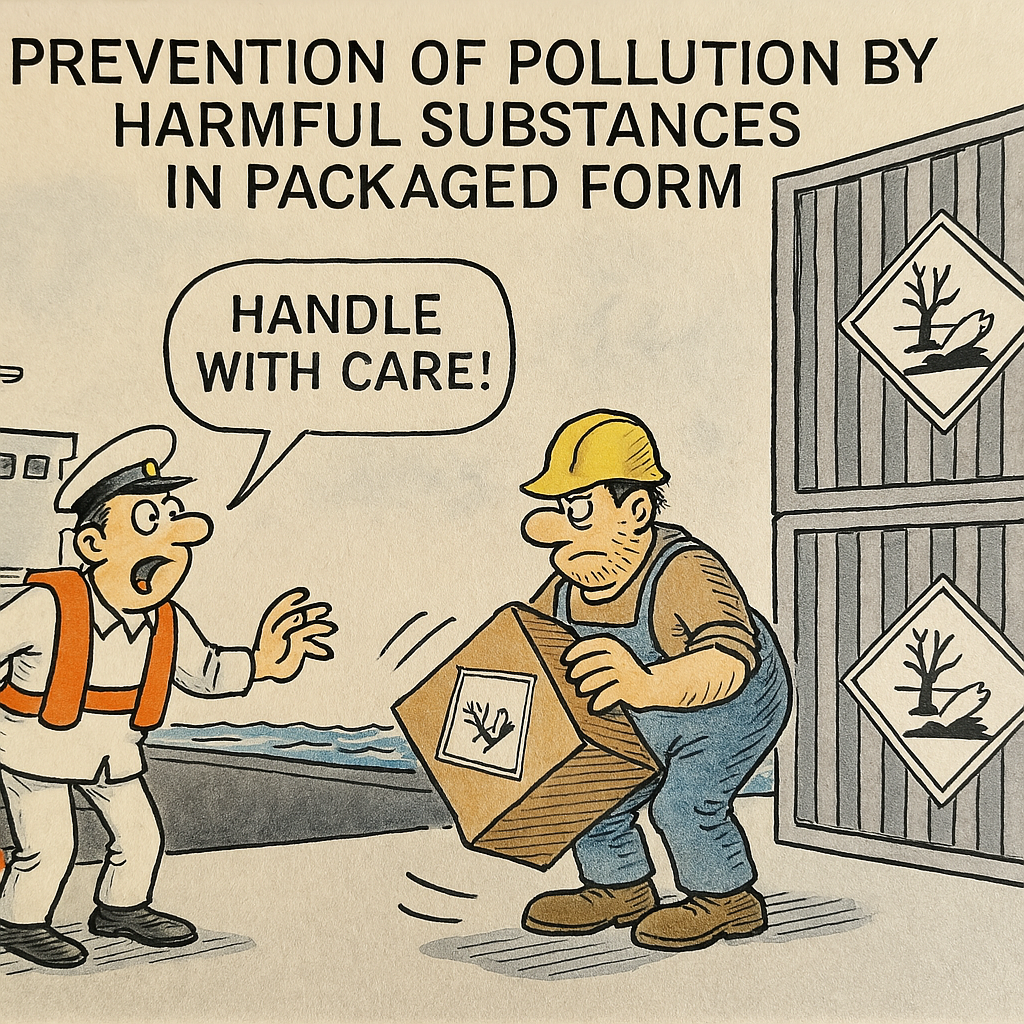Your cart is currently empty!

📘 MARPOL Annex III – Prevention of Pollution by Harmful Substances in Packaged Form
Objective:
MARPOL Annex III aims to prevent marine pollution caused by harmful substances that are carried in packaged form aboard ships. Unlike Annexes I and II, which deal with liquids in bulk, Annex III covers substances that are transported as cargo in packages, such as containers, drums, or tanks.
Scope of Application:
- Applies to all ships carrying harmful substances in packaged form.
- Also applies to port terminals and handling operations.
- Focuses on prevention through proper packaging, marking, documentation, and handling.
What Are “Harmful Substances”?
A harmful substance under Annex III is:
“a substance which is identified as a marine pollutant in the International Maritime Dangerous Goods (IMDG) Code or which meets the criteria for inclusion.”
These may include:
- Toxic chemicals
- Corrosive substances
- Flammable liquids and solids
- Environmentally hazardous substances (e.g. pesticides, heavy metals)
Key Requirements and Measures:
📦 Packaging and Containment
- Substances must be properly packaged to prevent leaks or spills during normal transport conditions.
- Packaging must comply with standards from the IMDG Code.
🏷️ Labeling and Marking
- Each package must be clearly marked with the proper shipping name, marine pollutant symbol, and UN number.
- Placards and hazard labels must be visible and durable.
📘 Documentation
- A detailed cargo manifest must be carried on board, listing all harmful substances.
- Safety Data Sheets (SDS) must be available for emergency reference.
- The location of harmful substances must be clearly indicated on the stowage plan.
⚠️ Handling and Stowage
- Substances must be stowed and secured according to the IMDG Code to prevent movement or damage.
- Incompatible substances must be separated.
- Special attention is required in loading/unloading operations to avoid accidental releases.
Port Reception and Incident Response
- While Annex III doesn’t require reception facilities like Annexes I and II, it does emphasize:
- Accident prevention
- Emergency procedures in case of spills
- Notification requirements for port and environmental authorities
Enforcement and Compliance:
- Compliance is enforced through flag state control, port state control, and inspections.
- Violations (e.g. mislabeling, damaged packaging) can lead to fines, detentions, or legal actions.
- Ships must follow both MARPOL Annex III and the IMDG Code, which is mandatory under SOLAS.
✅ Summary:
MARPOL Annex III helps protect the marine environment by ensuring that harmful substances in packages are:
- Properly packaged and labeled
- Clearly documented
- Handled with care
- Transported under strict safety guidelines
Together with the IMDG Code, it forms a critical framework for preventing accidental pollution during the global movement of hazardous goods by sea.
